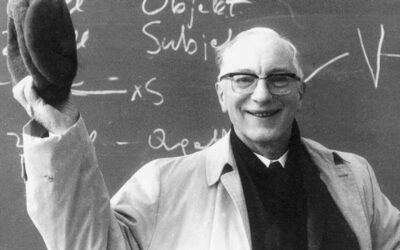How to fix Physician Burnout
We Have a Clinician who Treats Physician Burnout at Taproot Therapy Collective Check Him out Here
Physician burnout is a pervasive and pressing issue that threatens the well-being of healthcare professionals and the quality of patient care they provide. Preventing burnout is a proactive approach that requires a multi-faceted strategy involving healthcare organizations, leadership, and individual physicians.
The causes of physician burnout are complex and multifaceted, stemming from a combination of systemic factors and individual stressors. Long working hours, demanding schedules, administrative burdens, lack of autonomy, and emotional strain all contribute to the high rates of burnout among physicians.
The consequences of physician burnout are far-reaching, impacting not only the individual physician but also the healthcare system as a whole. Burnout can lead to decreased job satisfaction, increased medical errors, higher rates of physician turnover, and ultimately, compromised patient care.
Preventing burnout requires a comprehensive approach that addresses both the systemic and individual factors that contribute to this phenomenon. By implementing strategies to support physician well-being, healthcare organizations can create a more resilient and sustainable healthcare workforce.
Organizational Strategies for Preventing Burnout
Healthcare organizations play a crucial role in preventing physician burnout by creating a culture that prioritizes well-being and supports the needs of its healthcare professionals. Implementing policies and practices that promote work-life balance, reduce administrative burdens, and provide resources for stress management and mental health support are essential steps in building a resilient healthcare workforce.
One key strategy for preventing burnout is to address the issue of workload and scheduling. Healthcare organizations can implement policies that promote reasonable work hours, limit excessive call duties, and ensure adequate time for rest and recovery. Flexible scheduling options, such as part-time or job-sharing arrangements, can also help physicians maintain a better work-life balance.
Reducing administrative burdens is another important step in preventing burnout. Streamlining workflows, implementing efficient electronic health record systems, and providing support staff to handle non-clinical tasks can help alleviate the administrative pressures that contribute to physician stress and frustration.
Creating a supportive work environment that promotes collaboration, teamwork, and open communication is essential for preventing burnout. Healthcare organizations can foster a culture of support by encouraging peer-to-peer interactions, facilitating mentorship programs, and providing opportunities for professional development and growth.
Integrating wellness programs and resources into the workplace can also help prevent burnout. This may include offering stress management workshops, mindfulness training, and access to mental health services. Providing dedicated spaces for relaxation, such as meditation rooms or fitness facilities, can also promote self-care and stress reduction among healthcare professionals.
Leadership Strategies for Preventing Burnout
Leadership within healthcare organizations plays a critical role in preventing physician burnout by modeling healthy behaviors, advocating for systemic changes, and creating a culture that values and supports the well-being of its healthcare professionals.
One important strategy for leaders is to prioritize open communication and transparency. Encouraging physicians to speak openly about their concerns, challenges, and ideas for improvement can help identify areas where support and resources are needed. Regular check-ins and opportunities for feedback can also help leaders stay attuned to the needs and well-being of their team members.
Modeling healthy behaviors and work-life balance is another essential leadership strategy for preventing burnout. When leaders prioritize their own well-being, take time for self-care, and maintain boundaries between work and personal life, they set a positive example for their team members and create a culture that values and supports work-life balance.
Advocating for systemic changes that address the root causes of burnout is also a critical role for leaders. This may involve working with healthcare organizations, policymakers, and professional associations to implement policies and practices that promote physician well-being, such as reducing administrative burdens, improving reimbursement models, and increasing funding for mental health resources.
Providing support and resources for physicians who are struggling with burnout is another important leadership strategy. This may involve offering confidential counseling services, facilitating peer support groups, or connecting physicians with mental health professionals who specialize in working with healthcare providers.
Individual Strategies for Preventing Burnout
While healthcare organizations and leadership play a crucial role in preventing burnout, individual physicians also have a responsibility to prioritize their own well-being and engage in strategies that promote resilience and prevent burnout.
One key strategy for individual physicians is to prioritize self-care and maintain a healthy work-life balance. This may involve setting boundaries around work hours, taking regular breaks throughout the day, and engaging in activities that promote physical, mental, and emotional well-being, such as exercise, hobbies, and social connections.
Developing a strong support system is another important individual strategy for preventing burnout. This may involve cultivating relationships with colleagues who can provide peer support, seeking mentorship from experienced physicians, or joining professional organizations that offer resources and networking opportunities.
Engaging in mindfulness and stress-reduction practices can also be beneficial for individual physicians. Techniques such as deep breathing, meditation, and progressive muscle relaxation can help reduce stress, improve focus, and promote a sense of calm and well-being.
Seeking professional help when needed is another critical individual strategy for preventing burnout. Recognizing the signs and symptoms of burnout, such as emotional exhaustion, depersonalization, and decreased sense of personal accomplishment, and seeking support from a mental health professional can help physicians address the underlying factors contributing to their stress and develop strategies for building resilience.
We Have a Clinician who Treats Physician Burnout at Taproot Therapy Collective Check Him out Here
Types of Therapy

























0 Comments